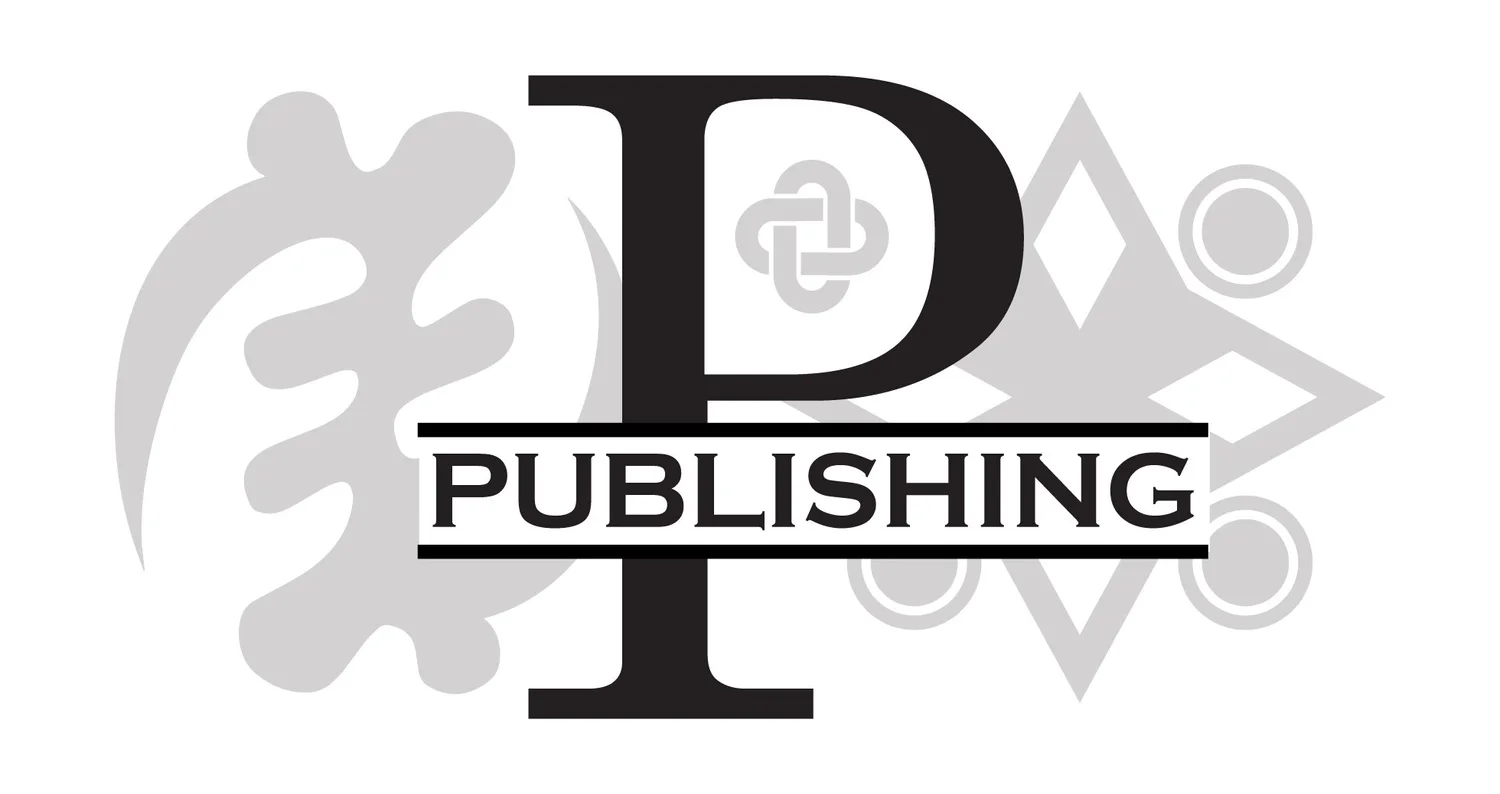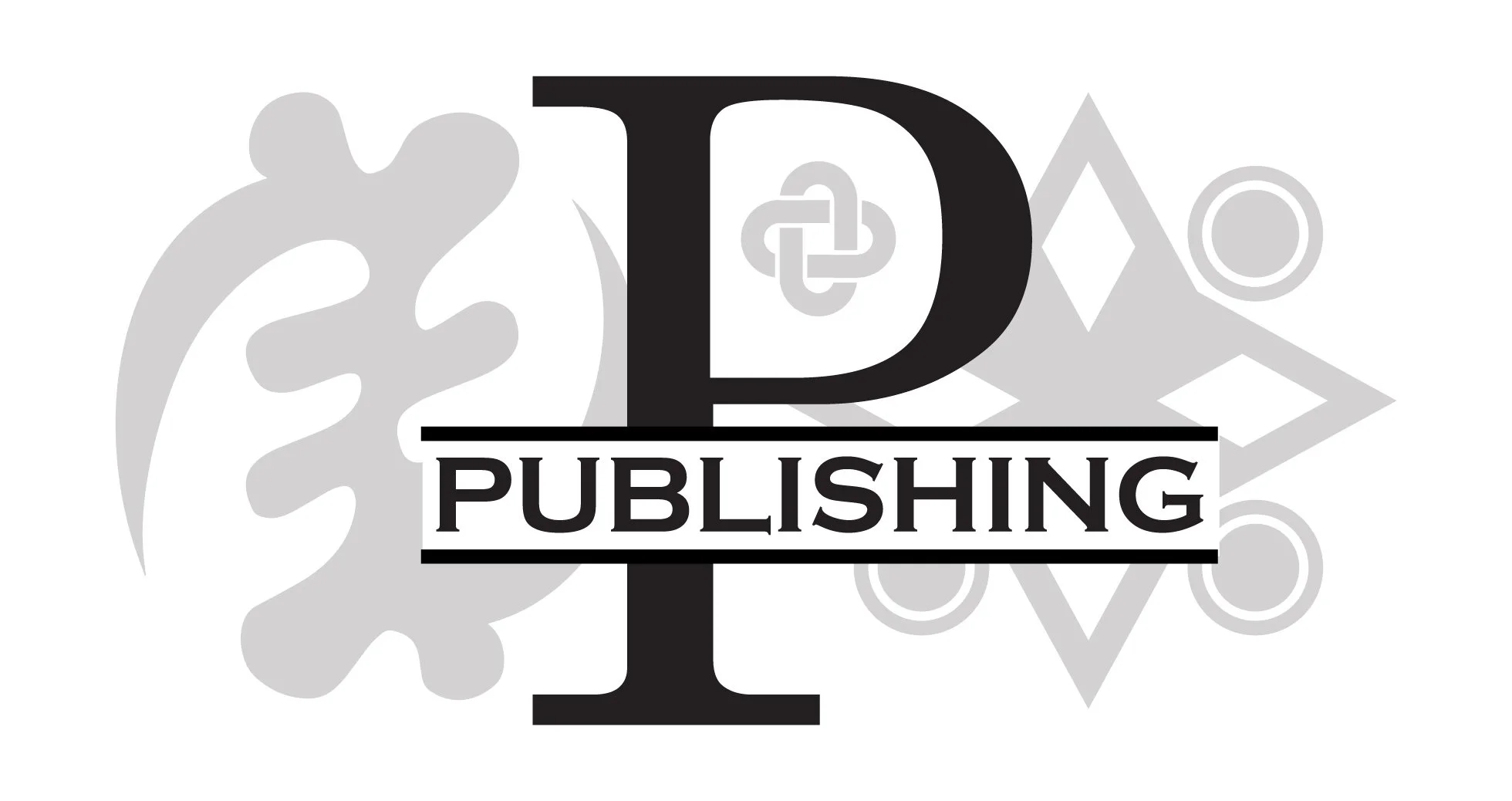October Blog 2025
Perryman House of Publishing Logo
The Foreground: “P” has a dual purpose. It stands for my surname and the word publishing.
The Background: The left and right characters are symbols called Adinkra.
Adinkra - Among the Akan people, adinkra refers to a specific cloth and not the symbols. Adinkra means to say goodbye and was traditionally worn by royalty and nobility at funerals and other special occasions. Historically, the adinkra cloths came in three colors: kuntunkuni for dark brown, kobene for brick red, and birisi for black. Today, bright or light cloth called kwasiada, meaning "Sunday" or "fancy cloth," is used for festive celebrations or everyday wear.
Motifs are carved onto a calabash piece with a handle and a slight curve to roll in the premade dye. The pigment is made by soaking, pulverizing, and boiling the inner bark and roots of the Badie tree. The water is strained and cooked several times until it thickens. The final dye is called aduro and stamped onto the cloth, separated by straight lines made by a wooden comb.
The symbol motifs are associated with aphorisms, and today they are worn for every occasion and can even be seen on art, jewelry, and pottery.
The left Adinkra symbol - Gye Nyame (Jeh-Nee AH-may) - Meaning: "Except God."
Symbol of the omnipotence and the omnipresence of God. (Fear no one, except God).
The Akan aphorism states, "Abode santann yi firi tete; obi nte ase a onim ne ahyease, na obi ntena ase nkosi ne awie, gye Nyame." *1
Literal translation: "This great panorama of creation dates back to time immemorial; no one lives who saw its beginning and no one will live to see its end, except God." *1
The symbol reflects the Akan belief in a supreme being, the creator, whom they refer to by various names, such as Oboadee, Nyame, and Onyankopon Twereampon (the reliable one). *2
The right Adinkra symbol - Esono Anantam (E-sono An-AN-tam) - Meaning: Elephant’s Footprint. Symbol of leadership, protection, power, and security.
The Akan aphorism states, “Wodi esono akyi a, hasuo nka wo, to wit.”
Literal Translation: “When you follow the elephant, you are not touched by (you don’t get wet from) the dew on bushes.” *3
This symbol is inspired by the footprints of an elephant, an animal known for its strength, wisdom, and significant presence. Just as an elephant’s steps leave deep imprints on the ground, this symbol reminds us that our actions leave lasting effects on the world around us. *4
Symbol inside the Capital “P” – The Mvskoke Wisdom Knot.
The Mvskoke Wisdom Knot is a spiritual symbol of the never-ending, eternal cycle.
The Mvskoke Wisdom Knot's four arms represent the four phases of life.
The four stages of life are infancy, youth, adulthood, and old age.
The four seasons of life are spring, summer, fall, and winter.
The four directions are east, north, west, and south.
The four colors are yellow, white, red, and black.
As we journey to the end of life, death, our spirits will travel across the Milky Way and return to the center of the knot, joining the Creator in the center of the universe for all eternity.
Muscogee Creek Indians
The European colonists were trading with a group of indigenous people living on the Oconee Creek. The name was shortened to Creek and applied to various towns in the future states of Georgia, Alabama, and North Florida.
The people called themselves Muscogee after their dominant group. The Muscogee Creek people were not a homogeneous group but a closely knit confederacy of small independent peoples sharing common beliefs, customs, and traditions.
President Andrew Jackson signed the Indian Removal Act, forcing the Muscogee people to emigrate from their southeastern homeland to Indian Territory, now Oklahoma, in the 1830s, known as the infamous Trail of Tears.
Now armed with this information, can you tell me in three words what my logo means? Email your responses, and in the next blog, I will share the answer.
References:

